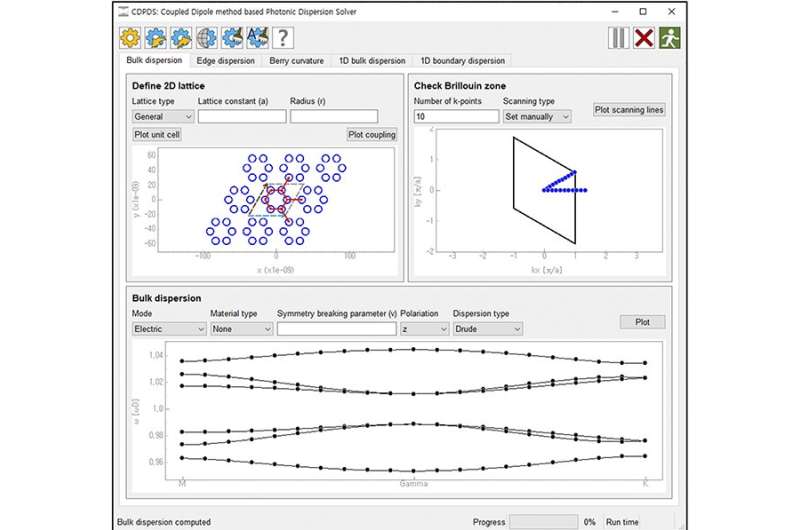This article has been reviewed according to Science X's editorial process and policies. Editors have highlighted the following attributes while ensuring the content's credibility:
fact-checked
proofread
Development of a photonic dispersion solver

An exponential increase in the amount of stored information is making the development of new optoelectronic devices increasingly important. Recently, photonic crystals have emerged as an alternative to overcome the limitations of conventional photonic devices thanks to their ability to control photons freely in microscopic space. A research team at POSTECH has developed a photonic dispersion solver that may act as the foundation for studies on photonic crystals, introducing the next generation of highly integrated devices
Professor Junsuk Rho (Department of Mechanical Engineering and Department of Chemical Engineering) at POSTECH along with a team from Gwangju Institute of Science and Technology (GSIT) led by Assistant Professor Minkyung Kim have developed and released a coupled dipole method-based photonic dispersion solver (CDPDS) online for free. The research results were featured in Computer Physics Communications.
Research on topological photonics requires a variety of simulations, including band analysis of a photonic crystal, calculation of boundary band dispersion between two different photonic crystals, and analytic computation of topological phases using dielectric structures of photonic crystals. These requirements have made it necessary to introduce different simulation settings and use post-treatment computation, which can deter the initiation of research.
To make research on topological photonics less elusive, the team has developed and released a program online that is equipped with an intuitive graphical user interface (GUI) while making all necessary computations possible even without separate post-treatment.
The coupled dipole method-based photonic dispersion solver (CDPDS) that the team developed provides computation of band dispersions and topological phases of one-dimensional and two-dimensional photonic crystals. Tests have shown that the CDPDS can offer fast computation by making the basic structure, a photonic crystal, resemble a dipole. Moreover, it possesses a GUI, making it accessible to general users who are not familiar with computer programming, and provides several useful built-in options for users. Therefore, the method can be used as a toy model to rapidly compute photonic dispersions or to model the photonic dispersion properties of a complex system.
More information: Minkyung Kim et al, CDPDS: Coupled dipole method-based photonic dispersion solver, Computer Physics Communications (2022). DOI: 10.1016/j.cpc.2022.108493
Provided by Pohang University of Science & Technology (POSTECH)




















